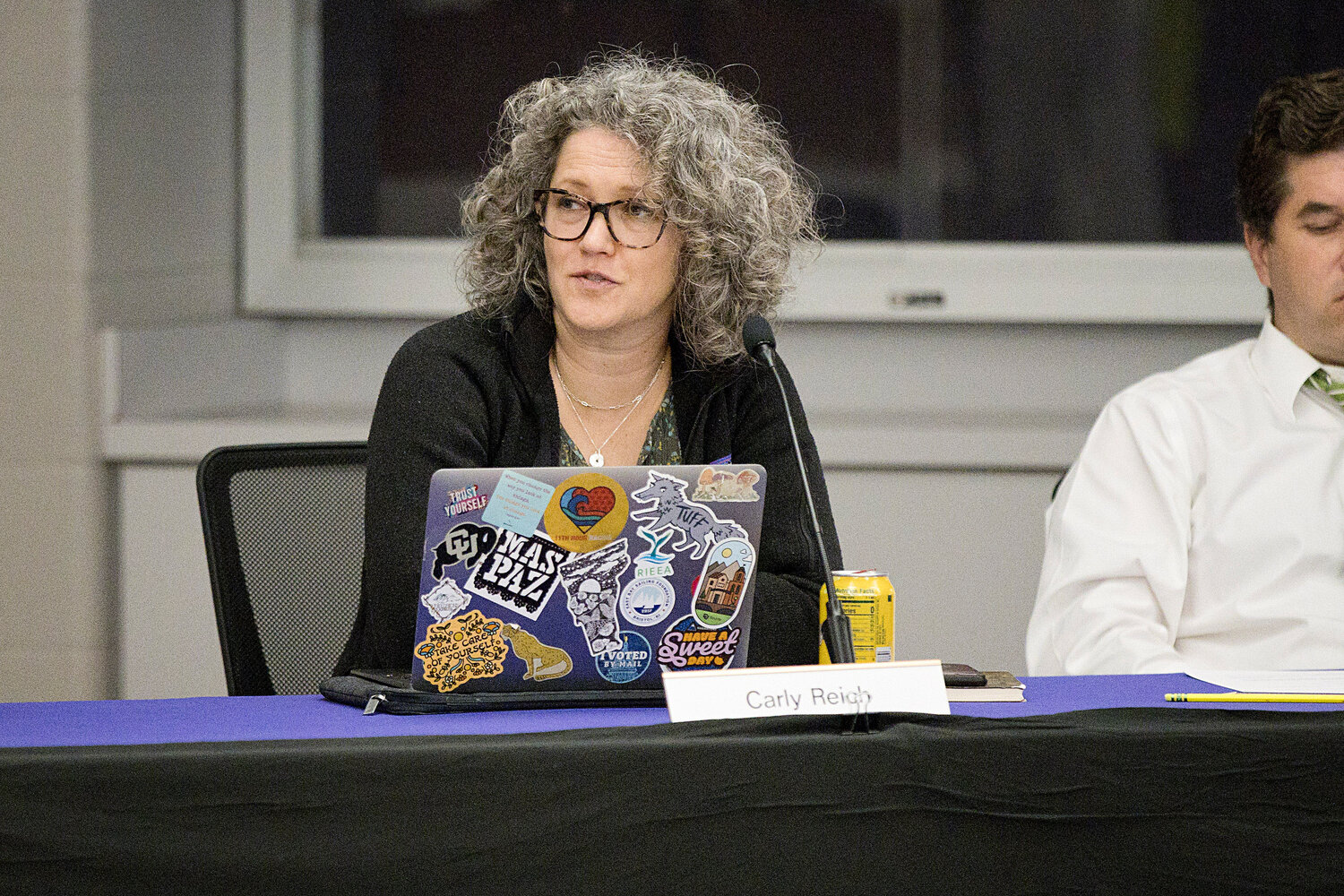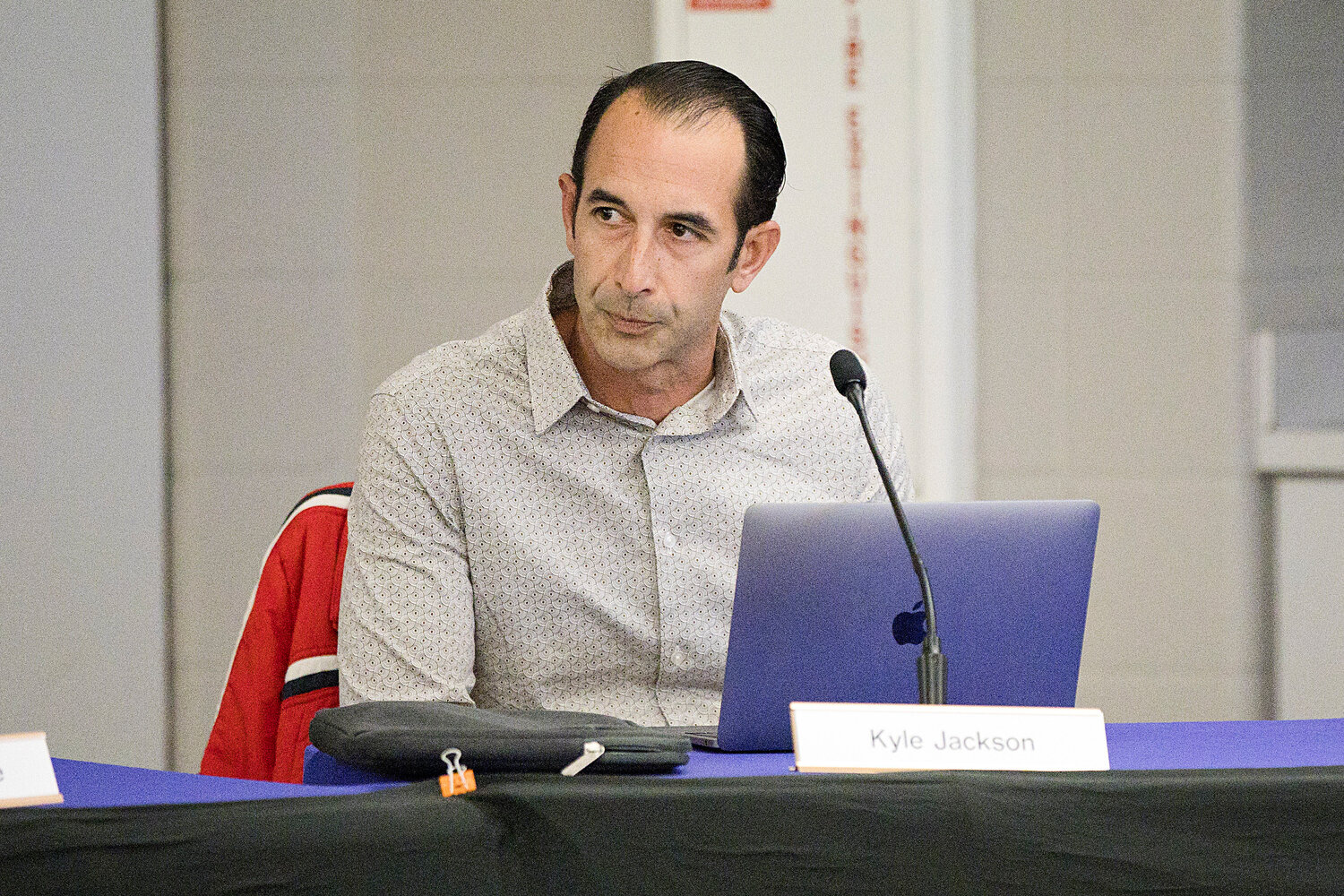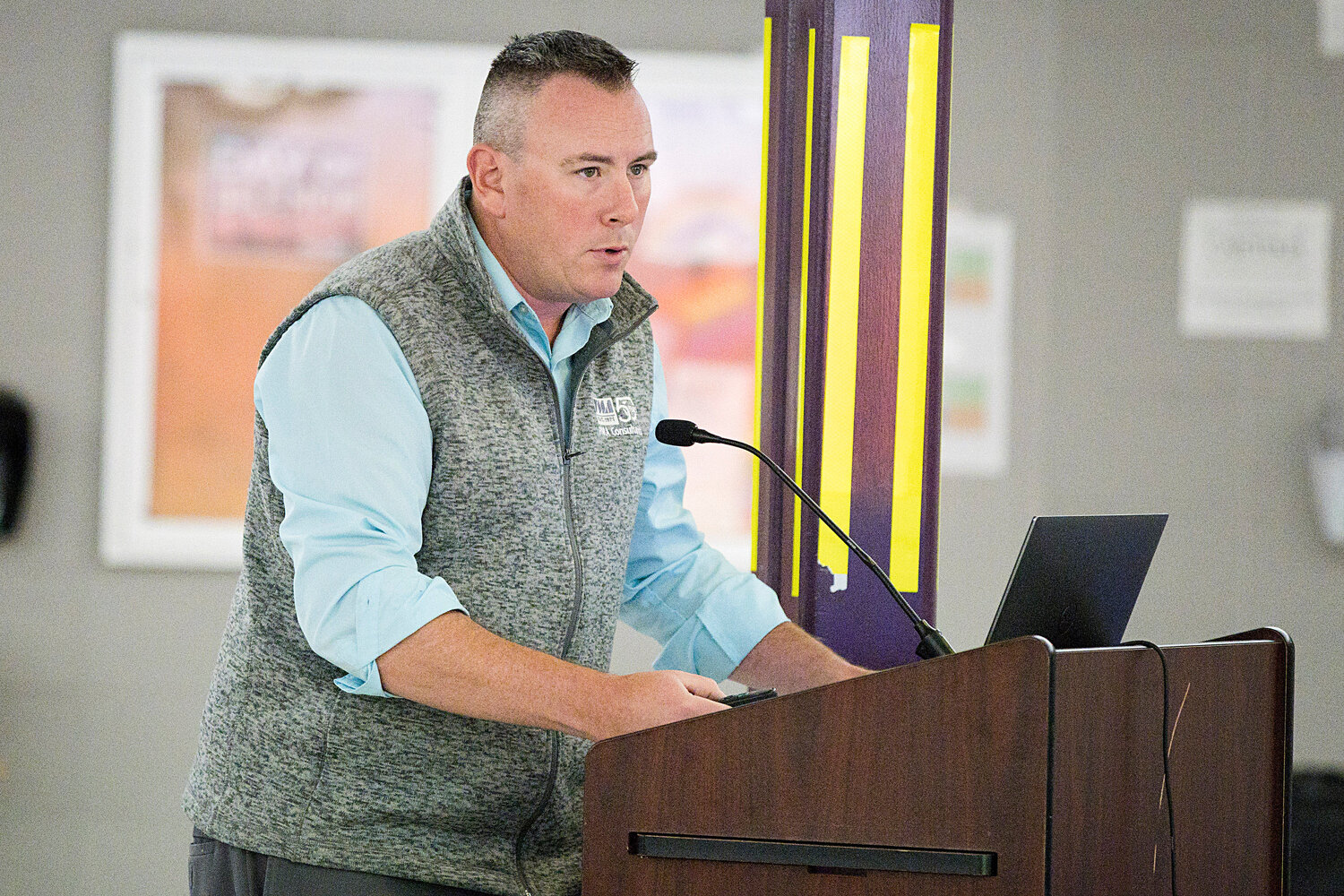- THURSDAY, SEPTEMBER 26, 2024
New Mt. Hope High design reaches 60 percent completion marker
Plenty of amendments, approvals remain before construction begins
BRISTOL — The new Mt. Hope High School project is approaching the notable 60 percent marker for completion of the design phase, turning the corner towards the finish line of the all-important …
This item is available in full to subscribers.
Please log in to continue |
Register to post eventsIf you'd like to post an event to our calendar, you can create a free account by clicking here. Note that free accounts do not have access to our subscriber-only content. |
Day pass subscribers
Are you a day pass subscriber who needs to log in? Click here to continue.
New Mt. Hope High design reaches 60 percent completion marker
Plenty of amendments, approvals remain before construction begins
Attachments
BRISTOL — The new Mt. Hope High School project is approaching the notable 60 percent marker for completion of the design phase, turning the corner towards the finish line of the all-important initial aspect for the $157,368,562 project.
At its meeting Monday night, Sept. 23, the Bristol Warren Regional School Committee heard the latest updates (see attachment) from its team of advisors, led once again by Chad Crittenden, Managing Director from PMA Consultants, the district's owner's project manager.
Crittenden told the Committee about the team's recent efforts since they last gathered a month ago, which saw the designers engaging with local stakeholders such as the Bristol and Warren Fire Departments to review plans for the new building's fire protection system as well as a gathering with the Bristol Technical Review Committee.
Of recent vintage, talk of whether to use traditional grass or artificial turf on the new football field at the high school has been at the forefront of the design process.
Crittenden said a decision must made between grass or turf because the fields are the "final major element" to be determined before the finishing touches can be made to the overall design with an eye towards the anticipated start of actual construction on the new high school in the spring of 2025.
In between now and then, though, Committee chair Nicky Piper noted after the meeting the design must still be approved by the Bristol Planning Board, the November 2024 election takes place when three new members will be voted on the body, approval by the Rhode Island Department of Education is also needed and the School Committee must open a Request for Proposal process to find the construction manager then approving the recommended firm.
"There's lots happening as we kind of round the final few corners of the construction document phase," Crittenden added.
Next up, Nel Daws and Lisa Pecora, architects from Perkins-Eastman, provided the Committee greater detail on the exterior of the proposed the new building as well as on the field turf choices.
Daws spoke about the concept for the two-story, singular structure, which she termed "very efficient." It takes inspiration, but is not beholden, to the two communities it serves.
The design of the school, a bit more contemporary than some would have liked, has "good site lines, good adjacencies and is good for security," according to Daws. She called it a "community building...We want it to be elevated and celebrated."
The facade is being designed to be predominantly brick and mortar. Daws called the brick "a very good material" for its aesthetics, durability and maintenance.
Pecora followed with a deep dive into the turf options for the football/track and field stadium, which will be the focal point of the new athletic fields on the grounds.
She went through three options: Low end grass, high end grass and synthetic turf.
Low end grass includes an estimated a construction cost of $400,000 and an annual maintenance fee of $40,000 for a 10-year total of $800,000. Best on annual usage hours of 550, the cost per hour is projected to $127.27. For high end grass those same figures are: $800,000 + $55,000 = $1,350,000; 850 total at per hour cost of $158.82. And for artificial/synthetic turf there are:$1,600,000 + $18,000 = $1,780,000; 3,000 total at per hour cost of $59.33.
Of the artificial turf, Pecora said the most modern incarnation continues the use of polyethylene fibers, which are far less abrasive than their predecessors. The infill has also changed through the generations, now using more sand and alternative substances like cork and others known in the industry as "corkonut," "safeshell" and "brockfill."
The cork substance is pretty self-explanatory. Corkonut is a mix of cork and coconut husk. Safeshell is derived from the exterior of walnuts. Brockfill is made of wood particles.
The pilings, the turf fibers themselves, are between 1.75 inches to 2 inches high, allowing for quality playing surface in multiple sports. It's long enough for solid footing in games like football and lacrosse while being just low enough for the flow of ball movement in soccer.
After consultation with District Athletic Director Christy Belisle, Pecora said it's likely the benefits of the synthetic turf, the ability to use it even during bad weather and the durability factor, would be a boon to student-athletes at the high school as well as other community organizations who would utilize the field in off hours.
Once the consultants were done with their respective presentations, Committee members made some inquiries and statements.
Secretary Tara Thibaudeau, who opted not to run for another term at the November 2024 election, used her time to read a statement expressing concern about the timeline of the project and the cost, especially after her Warren constituents were hit with what was an $8 million bill after the town settled a lawsuit filed from an October 2018 traffic accident.
She also noted her support for a holding a second referendum to be taken on the matter, saying only a fraction, 4,294 of 18,878 eligible voters, actually cast their lots at last year's special election.
After admitting the process was too far down the road for revision, Thibaudeau said "the burden" was now on the School Committee to be fiscally responsible and to keep costs as far below as possible the $200 million bond figure passed by voters.
Thibaudeau concluded her initial remarks with, "In the end I hope it doesn't destroy the towns that we live."
Turning the topic back to the design of the new high school, Committee member Kyle Jackson called it "super inviting" especially with the numerous open spaces and the number of windows. "I'm really digging the design here," he said.
Committee vice chairAdam McGovern, acknowledging Thibaudeau, said he "agreed the financial implications are pretty important."
He continued by reminding his colleagues the design was akin to that of the Yarmouth-Dennis High School some members toured earlier in the process.
McGovern termed it a "modest, modern design" that "looks great, but is not super flashy." And with it being not being in either downtown area of Warren or Bristol, it can stray a bit from those more historic, classic styles. It can be a bit more contemporary.
"We're all not going to agree, but it is a thoughtful design," McGovern added.
Committee member Carly Reich said the design felt "very appropriate" for a public school, in particular, and for the amount of money budgeted. She continued, it "hit as many of the wants we all desired" while being responsible with the taxpayers' money. Reich concluded by calling the design "thoughtful and appropriate."
Treasurer Jessica Almeida, who earlier sought some clarification about the reimbursements the district will receive from the Rhode Island Department of Education, was a dissenter on the "contemporary" feel of the building's design. She backed the use of the brick, but wasn't a fan of the actual layout of the structure, that it strayed too far from the traditions of the area.
Last up, Committee chair Piper also referenced Thibaudeau's comments by saying she was "hyper aware" of the body's duty to properly manage the project finances in the stead of their constituents.
Her support, she said, was bolstered after discussing the reimbursement scenario with the district's General Assembly delegation.
She asked them if it was responsible on the part of the district to pursue the school improvements project, which will also touch on Kickemuit Middle School as well as the Hugh Cole, Rockwell and Colt-Andrews Elementary Schools?
In response, they told the chair it would "irresponsible" not to so in the long term because it's likely similar pools of state monies for school construction won't be available in the coming years, that the time to act was at the moment.
Other items that may interest you



































